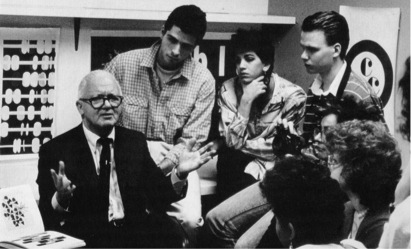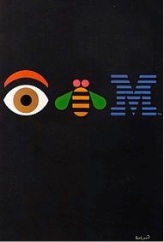Milton Glaser is known as one of the most influential and acclaimed graphic designers in the United States. Starting his study of art at a young age, he was educated at the High School of Music and Art and the Cooper Union Art School in New York. After his education, his list of accomplishments has been flourishing. He co-founded the graphic design firm Pushpin Studios in 1954, founded New York Magazine in 1968, established Milton Glaser, Inc. in 1974, and formed the publication design firm WBMG in 1983. Aside from his hobby in forming businesses, Milton’s art has been featured in exhibits all around the world.
One of Glaser’s most influential pieces of work was his psychedelic poster of Bob Dylan for Dylan’s album in 1966. Six million or more of his Bob Dylan posters were distributed with Dylan’s album. Glaser’s design was so beloved that the poster is now a collectible item that sells for hundreds of dollars. Many of Milton Glaser’s designs have personally impacted me, whether it is the logo for the Franklin Mills Mall that I go to, or the logo for Barron’s, a line of textbooks that I buy for school.

He also designed the logo for New York Magazine, Esquire Magazine, the logo for the show Mad Men, and the “I Love NY” logo. All of these designs are pieces of art that I encounter on a daily basis. It is fascinating knowing that the culture around my everyday life has been greatly influenced by Milton Glaser. It gives me great optimism by seeing those logos everyday because it makes me feel as though I could be the next great designer when I grow up.

Citation: Milton Glaser, I Lover NY Campaign, http://www.miltonglaser.com
I have a passion for graphic design because I love creating something that makes the world seem simpler. Milton Glaser has a very similar outlook on art: “Drawing can be considered a form of meditation. Meditation involves looking at the world without judgment and allowing what is in front of us to become understandable. Art, in fact, may be the best way we have to experience truth or what is real” (Milton 11). Glaser’s words are the words to always remember when one is designing. Like meditation, creating understandable artwork will bring peace and relief to the viewer, which will create success within the design. Milton has lived by this outlook on art, and has therefore become incredibly successful.
Sources:
Glaser, Milton. Drawing Is Thinking. Woodstock, NY: Overlook, 2008. Print.
Oloizia, Jeff. “Milton Glaser’s Legacy.” NY Times. N.p., 27 Mar. 2015. Web. 27 July 2015. <http://tmagazine.blogs.nytimes.com/2015/03/27/milton-glaser-by-the-numbers/>.


_panels_11_to_15.jpg)




